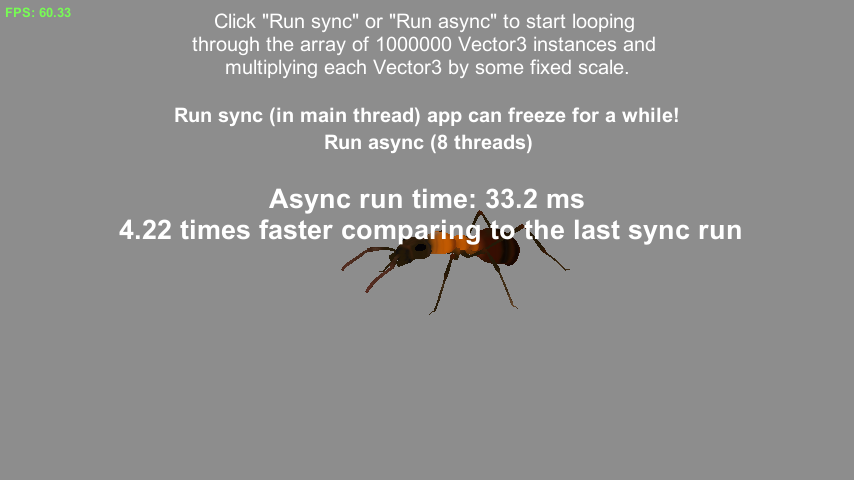Hey everybody!
Sometimes people ask me about delayed actions or threading in Unity3D and usually I suggest to use coroutines since they are suitable for the most cases I faced with.
But sometimes we need to use true threading and make some calculations faster, A* path finding for example.
So I decided to make a fast-written performance comparison of traditional code execution vs. threaded version. I searched for some simple threads managers and found this really simple Loom class from whydoidoit accidentally.
I did a simple test app for different platforms (I attached archive with apps and sources at the end of this post) and found some results pretty interesting.
All my code is trying to do – is just to make CPU think a little while working with huge array of Vector3D instances (10 000 000 for Desktop platforms and 1 000 000 for mobile platforms):
private void Run()
{
const float scale = 432.654f;
for (int j = 0; j < arrayLength; j++)
{
Vector3 v = vertices[j];
v = Vector3.Lerp(v * scale / 123f * v.magnitude, v / scale * 0.0123f * v.magnitude, v.magnitude);
vertices[j] = v;
}
}
This is a simple dummy code as you can see.
I added simple Ant model (hello, Away3D examples authors! :)) with rotation at Update() to the scene in order to see how app can freeze while running this ugly code in main thread.

I did few tests of this code as I mentioned previously, both in sync (straight execution in main thread) and async (running it the separate threads) modes, here are results I’ve got (S – sync, A – async):
Continue reading
Found a typo? Please, highlight it and press Shift + Enter or click here to inform me!

